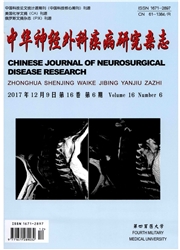

 中文摘要:
中文摘要:
目的 明确外源性人端粒酶催化亚单位(hTERT)在人神经干细胞永生化过程中的作用。方法 利用构建了hTERT基因的逆转录病毒载体PLXSN转染人NSCs,G418筛选后,扩大增殖,稳定后观察其生物学特性,检测端粒酶活性,通过核型分析、裸鼠移植致瘤性观察来了解转染细胞特性。结果 hTERT基因转入培养的NSC后,端粒酶活性增强,细胞增殖加速,传代时间缩短,传代50代仍稳定增殖,核型分析正常,无致瘤性。结论 hTERT基因转染NSCs,能获得永生化细胞,其表型能得以正常维持,可以作为进一步研究的种子细胞。
 英文摘要:
英文摘要:
Objective To investigate the effect of human telomerase reverse transeriptase (hTERT) in the immortalization of human neural stem cells (NSCs). Methods Human NSCs were cultured and transfected with retrovirus vector PLXSN-hTERT encoding hTERT. Positive clones were selected by G418. Expression of hTERT mRNA and telomerase activity was detected in stable clone. Karyotype analysis and nude mice transplantation were enforced to investigate the biology features of transfected cells. Results After NSCs transfected with hTERT gene, the expression of telomerase activity became much stronger. Cell proliferating activity increased and population doubling time (PDT) decreased. Moreover, there were 46 chromosomes in hTERT transfected NSCs. No abnormal DNA ploidy could be found in those cells. And no tumorigenesis was found when those cells were transplanted into the nude mice subcutaneously. Conclusion NSCs can be immortalized by hTERT transfection, and the immortalized NSCs can be used as seed cells for further study.
 同期刊论文项目
同期刊论文项目
 同项目期刊论文
同项目期刊论文
 期刊信息
期刊信息
